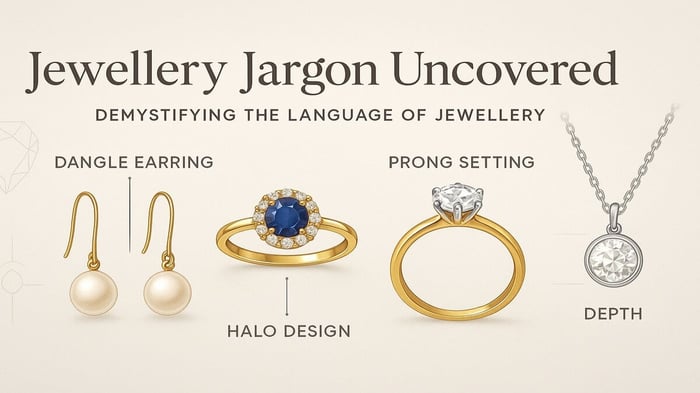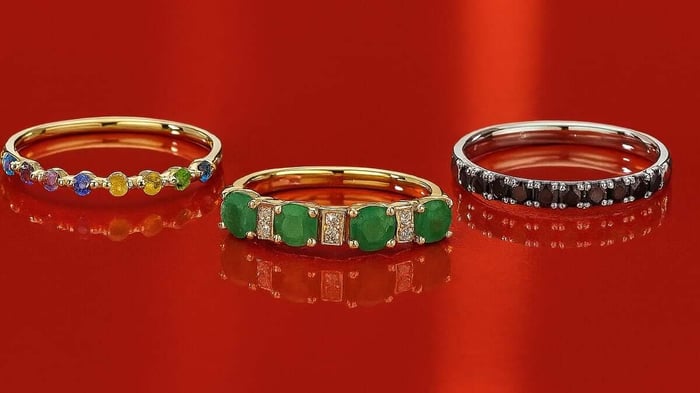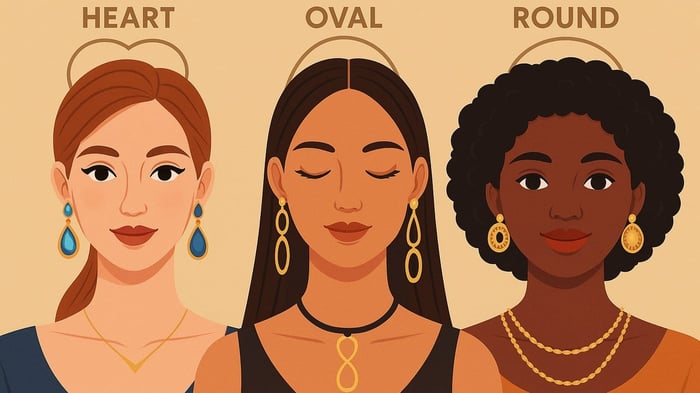Table of Contents
- A Brief Stroll Down Faux Pearl Lane: History’s Favourite Jewellery Trick
- The First Faux Pearls: Ancient China’s Chemical Marvels
- Early Experiments: Clay, Mica, and the Allure of Imitation
- Venetian Glassmakers and the Rise of Sophisticated Simulants
- Roman Pearls: Fish Scales and Wax in the 18th Century
- Mixing Real and Faux: Even Royalty Played the Game
- Identifying Pearl Types: A Skill Honed Over Centuries
- The Enduring Appeal of Pearl Simulants
- The Sniff Test, Tooth Test, and the Loupe: Getting Hands-On With Pearl Identification
- When ‘Real’ Isn’t What It Seems: The Case of Freshwater, Saltwater, and ‘Pearl Cousins’
- From Pearl Pretenders to the Real Deal
Once, on a rainy day in Oxford, a vintage necklace in a charity shop window caught the eye—lustrous pearls glinting in the gloom. But were they real pearls or clever impostors?
The world of pearls is riddled with such delightful mysteries—it’s easier to tell them apart than most gemstones, but with surprising twists and long-standing traditions. Here’s where history, science, and a dash of curiosity meet at your next jewellery box discovery.
TL;DR: Spotting real pearls isn’t just a skill for experts. From historic fakes to modern lookalikes, even a beginner can learn pearl identification tricks and avoid common pitfalls.
A Brief Stroll Down Faux Pearl Lane: History’s Favourite Jewellery Trick
For centuries, pearls have been the ultimate symbol of wealth and elegance. Their natural beauty, rarity, and lustre made them the preserve of royalty and the elite. In fact, some societies even passed laws restricting who could wear natural pearls, underlining their status as treasures of the highest order. Unsurprisingly, this exclusivity sparked a wave of ingenuity, with people devising clever ways to create imitation pearls—what we now call pearl simulants.
As Antoinette Matlins, a respected gemologist, once said:
'Pearl imitations have a history as dazzling as the gems themselves.'The First Faux Pearls: Ancient China’s Chemical Marvels
The earliest known reference to imitation pearls comes from China. In 83 CE, Wang Chong’s Lun Heng described how the Marquis of Sui made pearls from chemicals, claiming they were as brilliant as the real thing. While the exact recipe is lost to time, this account marks the beginning of a long tradition of imitation pearl materials—a tradition that would only grow more inventive with time.
Early Experiments: Clay, Mica, and the Allure of Imitation
In the ancient world, the desire for pearls led to some creative solutions. Some civilisations baked small clay beads and coated them with mica powder to mimic the shimmer of natural pearls. These early pearl simulants were simple but effective, offering a taste of luxury to those who could not afford the real thing.
Tension Set Diamond Bangle 0.33ct G/SI Diamond in 18k Yellow Gold

£2,234.00
£2,667.00
Look and feel your best when you wear this stylish and high-end bangle. This bangle bracelet is crafted with a touch of class and a little bit of romance. The simple and delicate design is perfect for dressing up or… read more
Venetian Glassmakers and the Rise of Sophisticated Simulants
The art of imitation took a leap forward in 16th-century Venice. Here, skilled glassmakers began producing hollow glass beads, which they filled with wax to give them a weight and feel similar to natural pearls. The surface was treated to create an iridescent sheen, making these faux pearls remarkably convincing. Research shows that these Venetian creations marked the start of truly sophisticated imitation pearls materials—and they quickly became popular across Europe.
Roman Pearls: Fish Scales and Wax in the 18th Century
By the 18th century, the so-called “Roman pearls” had become the simulant of choice. These were hollow glass beads coated inside with essence d’orient, a pearlescent substance derived from fish scales. The beads were then filled with wax, making them feel more like genuine pearls. This clever use of natural and artificial materials blurred the lines between real and fake, and these pearls were often set alongside natural pearls in the same jewellery.
Mixing Real and Faux: Even Royalty Played the Game
It might surprise some to learn that the mixing of natural pearls and simulants was not frowned upon by the upper classes. In fact, it was common practice—even among royalty. Queen Elizabeth I, for example, was said to wear both real and imitation pearls on diplomatic occasions, allegedly to keep would-be thieves guessing. This blend of authenticity and artifice was a practical solution in an age when natural pearls were both precious and perilous to wear.
Identifying Pearl Types: A Skill Honed Over Centuries
With such a rich history of imitation, pearl type identification became an essential skill for jewellers and collectors. Today, experts can distinguish between natural pearls, cultured pearls, and simulants using advanced equipment, but even a simple loupe or the classic “tooth test” can reveal a lot. Real pearls feel gritty when rubbed against the teeth, while most imitations are smooth. Visual clues—like uniformity, peeling coatings, or unusual weight—also help in spotting fakes.
The Enduring Appeal of Pearl Simulants
From ancient chemical concoctions to Venetian glass and Roman fish scales, the history of pearl simulants is as fascinating as the gems themselves. These ingenious creations allowed more people to enjoy the beauty of pearls, while also challenging the skills of jewellers and collectors. As research indicates, the rarity of natural pearls made imitation inevitable—and the creativity it inspired continues to shine in jewellery boxes around the world.
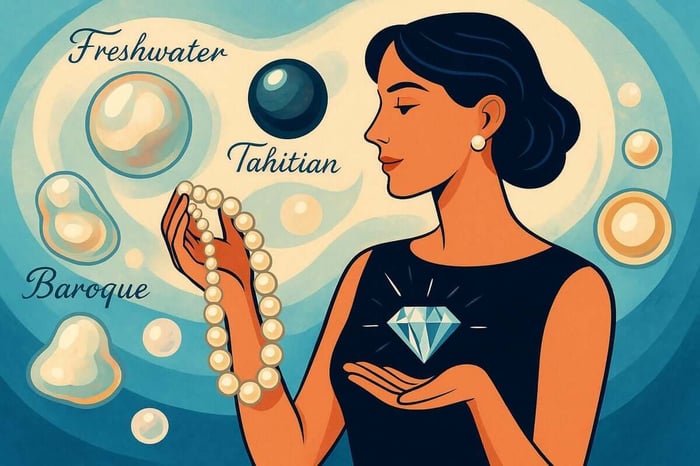
The Sniff Test, Tooth Test, and the Loupe: Getting Hands-On With Pearl Identification
When it comes to real pearls vs fake pearls, the difference is often more obvious than with other gemstones. Seasoned pearl dealers can usually spot imitation pearls by appearance alone. Yet, even the most experienced eyes can be fooled—especially when fame, provenance, or clever marketing cloud judgement. For those less familiar with pearls, a few simple tools and tricks can reveal a lot. All you really need is your eyesight, a magnifying loupe, and, yes, your teeth.
First Impressions: What the Eye Can See
At first glance, many imitation pearls look convincing. However, research shows that most synthetic pearls display a uniformity that real pearls rarely possess. Real pearls, whether natural or cultured, are the product of layer upon layer of nacre. This gives them a unique pearl surface texture—subtle variations in shape, colour, and lustre. In contrast, imitation pearls are often flawless and identical, betraying their artificial origins.
Diamond Double Chain Bracelet 0.15ct G/SI 18k Yellow Gold

£561.00
£757.00
This diamond double chain bracelet is made in UK hallmarked 18K yellow gold. It features a classic, yet distinctive design. The 10 round diamonds make a fantastic display on the wrist, and it's a perfect gift for any special occasion.… read more
The Tooth Test for Pearls: A Classic Home Method
One of the most famous pearl authenticity tests is the tooth test for pearls. It’s as simple as it sounds: gently rub the pearl against the edge of your front teeth. A genuine pearl will feel gritty or sandy, thanks to the microscopic layers of nacre. Imitation pearls, made from glass, plastic, or other materials, will feel smooth or slippery. This texture test is unique to pearls and is surprisingly reliable. Imagine the awkwardness of biting a friend’s necklace at a dinner party—yet, it’s an effective way to solve the mystery!
Having written all of the above, for sanitary reasons, you might prefer a different test to attain the same goal! You can rub the two ends of a pearl necklace together to get the same effect. If there is a sandpaper feel, you've got genuine pearls. A smooth texture that allows the 'pearls' to slide easily off each other indicates that you have uncovered fake pearls. Additionally, genuine pearls, when rubbed together, will produce a slight powdery residue; however, this residue wipes off easily and won't leave scratches.
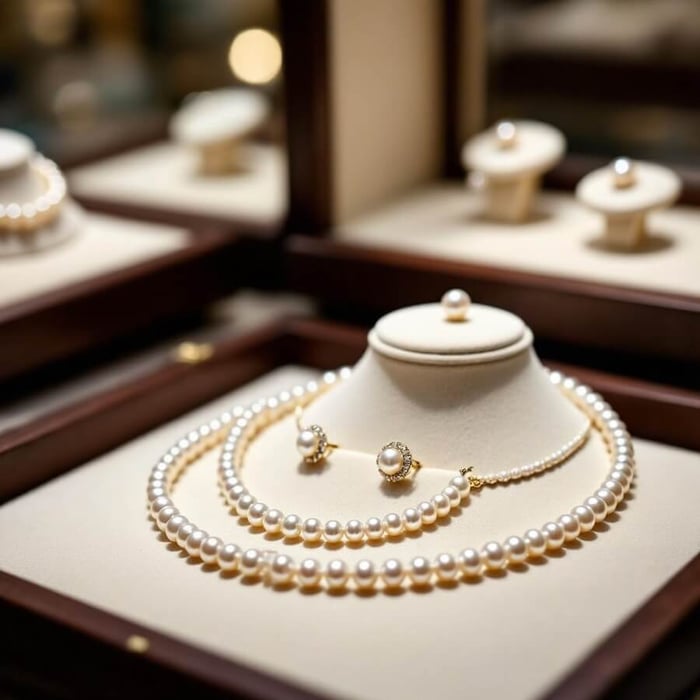
Magnification: The Loupe Reveals All
For a closer look, a jeweller’s loupe is invaluable. Under magnification, real pearls show fine, grainy nacre layers and subtle surface irregularities. Imitation pearls, on the other hand, often reveal telltale signs: peeling or scratched coatings, visible seams, or a glassy underlayer. Some simulants are coated with substances like plastic enamel, mica, fish or oyster scales, mother-of-pearl powder, titanium dioxide, or wax. These imitation pearl materials can flake or wear away, especially on older pieces.
Modern Simulants: More Than Just Glass and Plastic
Today’s imitation pearls come in many forms. Some are made from glass beads coated with pearlescent paint, while others use compressed cotton, resin, or even mica. Fish scales and oyster scales have long been used to create a shimmering effect. There are also “cotton pearls,” which are lightweight and have a distinctive feel. Each material brings its own quirks, but most lack the weight, lustre, and texture of true pearls.
Special Cases: Blister Pearls and Hematite Beads
Not all pearl lookalikes are straightforward fakes. Blister pearls, also known as mabe or Bohemian pearls, are formed as bumps on the inside of a mollusc shell. They’re often filled with a hard substance and backed with mother-of-pearl. The best way to identify them is to look for a glued seam, though this can be hidden by a clever setting. A loupe can sometimes reveal the use of mother-of-pearl powder or a binding agent, especially in reconstituted gems.
Black pearls pose their own challenges. Hematite, a heavy iron oxide mineral, is sometimes used to simulate black pearls. It has a metallic sheen and a much higher weight than real pearls. If you’re unsure, simply pick up the bead—hematite will feel noticeably heavier. This is a classic example where weight, not just appearance, can help with pearl authenticity tests.
When Pearls Imitate Pearls
Sometimes, the most convincing simulant is a pearl itself. Freshwater pearls are less expensive to produce than their saltwater counterparts, and unscrupulous sellers may pass them off as South Sea or Tahitian pearls. Size is a clue—South Sea and Tahitian pearls are rarely under 8mm in diameter. Freshwater pearls may also show off-round shapes, lower lustre, or signs of dye, especially in coloured varieties.
‘There’s a small thrill in discovering a fake—almost like solving a mystery in miniature.’ – Vivienne Becker, jewellery historianIn summary, while advanced laboratory tests exist, home methods like the tooth test and magnification are often enough for most pearl identification. The world of real and faux pearls is full of surprises, and a little curiosity (and perhaps a loupe) goes a long way.
Diamond Drop Earrings 5.25ct G/SI Quality in 18k White Gold 5.0mm

£9,966.00
£19,067.00
Our skilled UK craftsmen handmade these exquisite drop earrings, sold with a lifetime guarantee of workmanship. The earrings are fashioned in chic 18k white gold and comprise several square-shaped mounts that ascend in size as they drop down to form… read more
When ‘Real’ Isn’t What It Seems: The Case of Freshwater, Saltwater, and ‘Pearl Cousins’
In the fascinating world of pearls, the line between what’s “real” and what’s “faux” is not always as clear as one might hope. While most people can spot a plastic bead masquerading as a pearl, the real challenge comes when genuine pearls themselves are used to imitate their more valuable relatives. This is especially true with freshwater pearls, which, although authentic, are often passed off as their pricier saltwater cousins. For anyone consulting a pearl buying guide, understanding these subtle differences is crucial for making informed choices.
The Freshwater Pearl Dilemma
Freshwater pearls are produced in abundance, mainly in lakes and rivers, and their cultivation costs are significantly lower than those of saltwater pearls. As a result, they’re more affordable and widely available. However, their lower price doesn’t mean they lack beauty or charm. The real issue arises when high-quality freshwater pearls are presented as saltwater pearls—particularly South Sea or Tahitian varieties—by unscrupulous sellers hoping to fetch a higher price. Research shows that even seasoned experts can struggle to distinguish between top-grade freshwater and saltwater pearls without specialised tools or laboratory testing.
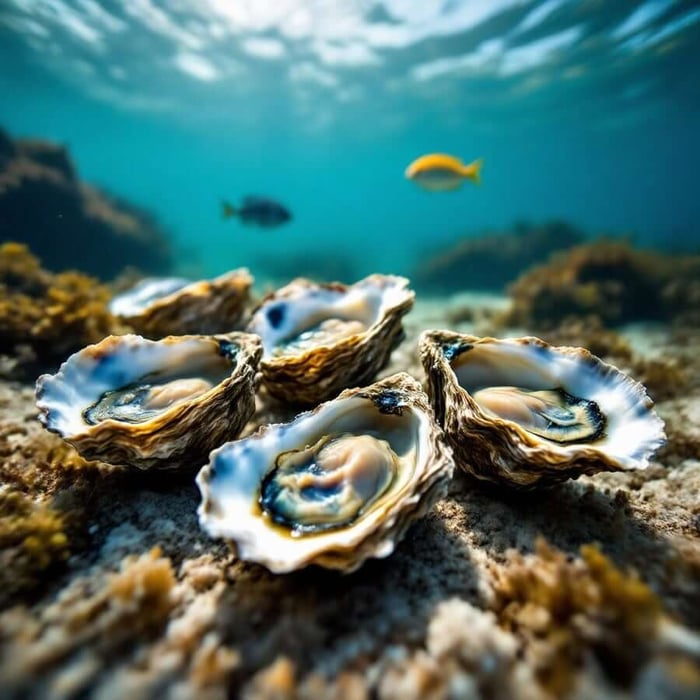
Spot the Clues: Lustre, Shape, and Price
So, how can buyers protect themselves? One of the first clues lies in the pearl value factors—luster, shape, and price. Freshwater pearls typically display a softer, less mirror-like luster compared to the sharp, reflective glow of saltwater pearls. Their shapes are often more off-round or baroque, rather than the near-perfect spheres prized in saltwater varieties. If you spot a strand of “luxury” pearls with a suspiciously low price tag, or if the pearls are unusually small (especially for South Sea or Tahitian pearls, which rarely measure under 8mm), it’s wise to pause and question the authenticity. As Robert Weldon, a GIA pearl specialist, aptly puts it:
‘Always question a bargain pearl—sometimes a great deal is just that: too good to be true.’Blister Pearls: Close, But Not Quite
Another common pitfall for buyers is the so-called “blister pearl.” Unlike fully formed pearls, blister pearls develop as raised bumps on the inside of a mollusk’s shell. They’re often cut out, filled with a hard substance for stability, and backed with a thin layer of mother-of-pearl. The result can look convincing, especially when set in jewellery that hides the seam. However, a close inspection—ideally with a loupe—may reveal glue lines or uneven surfaces, clear indicators that the pearl is not what it seems. These “pearl cousins” are sometimes marketed under names like "mabe" or "Bohemian" pearls, but they lack the structure and value of true pearls.
Pearl Cousins and Clever Simulants
In addition to blister pearls, there are other simulants to be aware of. Haematite beads, for example, can mimic the appearance of black pearls thanks to their metallic sheen, but they’re much heavier and lack the organic texture of nacre. Mother-of-pearl powder is sometimes reconstituted into beads, but under magnification, the difference becomes obvious. Even so, the most convincing simulant remains the genuine freshwater pearl, cleverly used to imitate saltwater types.
Expert Eyes Only? When to Get a Second Opinion
Given these complexities, it’s no wonder that pearl type identification can be daunting for newcomers. Studies indicate that buyers should always cross-check the pearl’s type, size, and price, and when in doubt, consult a reputable expert or refer to a trusted pearl buying guide. The GIA Pearl Identification Report, for example, uses advanced equipment to confirm whether pearls are natural, cultured, or imitation, providing peace of mind for high-value or rare purchases.
Beauty, Truth, and the Value of Knowing
Ultimately, the allure of pearls lies in their subtlety and uniqueness. Whether freshwater or saltwater, each pearl tells its own story through its shape, lustre, and surface. But in a market where appearances can be deceptive, a little knowledge—and a healthy dose of scepticism—goes a long way. Whether you’re drawn to the affordable charm of freshwater pearls or the prestige of saltwater gems, understanding the differences is key to appreciating their true value and beauty.
Certified Diamond Pear Solitaire Engagement Ring 2.00ct E/VS Platinum

£23,767.00
£41,467.00
Make a statement with this pear-shaped diamond solitaire engagement ring. The three-prong setting showcases a stunning 2.00 carat E/VS diamond set in shimmering and durable white platinum. Enjoy peace of mind with a lifetime workmanship guarantee and an independent diamond… read more
From Pearl Pretenders to the Real Deal
If this dive into the world of pearl lookalikes has sparked your appreciation for genuine craftsmanship, you’ll feel right at home with our collection of authentic diamond jewellery.
At AllDiamond.co.uk, every piece is made with 100% natural diamonds, designed and handcrafted in Britain — no simulants, no shortcuts, no compromises.
Whether you’re after everyday elegance or something that stops traffic, you’ll find the real sparkle right here.
👉 Explore our collections and discover jewellery that tells the truth — brilliantly.


